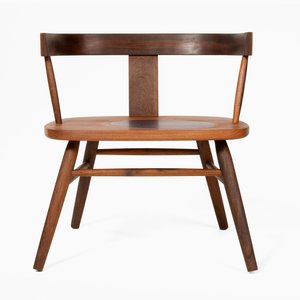The Marine Debris Project Transforms Trash into Treasure
Shapeshifters
Designs that look good and do good? They're the ultimate dream for design lovers like us. That’s why we’re such great fans of Supercyclers, an Aussie-based collective dedicated to transforming waste materials into sustainable, innovative, and truly lovely-to-look-at designs. As cofounder Sarah K puts it, “We want to alter perceptions of waste, to see it as the valuable resource that it is, making it desirable again.” Plus, Supercyclers takes a “stronger together” approach, collaborating with designers far and wide, which we absolutely adore.
So when we heard about Supercyclers’ latest, inspiring project, we just had to share. For their current endeavor, the Marine Debris Bakelite Project, Supercyclers and longtime collaborator Andrew Simpson of Vert Design have developed a brand new material created from 100% recycled plastic collected from Australian beaches—washed up from the Great Pacific Garbage Patch. Working with designers from around the globe, they’ve used this novel material, called Marine Debris Bakelite, to create a tabletop collection composed of 11 objects, including plates, bowls, glasses, a pitcher, a light, and more. The resulting pieces have a marbled quality that “references early Bakelite in look, weight, and density.” Collaborators include some of today’s most exciting and respected designers: Formafantasma, Jasper Morrison, Ladies & Gentleman Studio, Jonathan Zawada, Kirstie Van Noort, Greece is for Lovers, Martì Guixè, and, of course, Supercyclers. The MDB collection is currently being offered via the crowd-funding site Pozible, and—assuming the campaign is successful (organizers estimate they need about 500 funders to make it happen)—all pieces will be made-to-order using small scale industrial and hand-manufacturing processes, meaning they’ll only make what is needed (read: no waste). You can pre-order MDB pieces individually or as curated sets (e.g., the “Dinner for 4 Set,” “Chef’s Set,” or super covetable “Museum Collection Set”). The campaign runs through June 12th, and pieces are scheduled for delivery in September of this year.
Explaining the rationale behind the project, Supercyclers’ cofounder Sarah K says, “Once you’ve seen pictures of the Great Pacific Garbage Patch, you can’t help but be affected . . . My sentiment is that designers have been trained in problem-solving, so we should be able to solve problems when we’re faced with them. So we put our minds to making something out of the ugliness that was as beautiful as it could possibly be. Both Andrew and I have collected Bakelite—it’s a form of early plastic that has a much denser and harder characteristic than the throwaway plastic that we’re used to. You don’t want to throw it out … it feels more valuable. So we wanted to make something out of plastic that elevates it back to where it should be . . . That it lasts forever is annoying if it gets into the ocean and waterways, but if it’s something you want to keep and pass on for generations, it’s actually perfect.”
Describing what drew him to the project, Aussie-born, L.A.-based artist-designer Jonathan Zawada tells us, “I was really motivated by the opportunity to work with a new material that had many of the aesthetic properties I’ve been interested in—randomness, unique variations, fluid textures.” Further, he says, “While a lot of recycled materials prevent trash entering the natural environment, which is fantastic, Marine Debris is one of the first materials I’ve heard of that actually encourages consumption, in that the more objects that are made with it, the more pollution is taken out of the beaches and oceans. This positive feedback cycle existing within the economics of consumerism felt really exciting to be a part of; [this] has always been a problem I’ve grappled within my practice.”
The project also seems to have opened some potential new doors for Zawada’s own design approach. He says, “Meeting with the team behind the project has been really gratifying and inspiring and has helped me see a much wider range of possibilities and find a deeper sense of purpose within my practice. In seeing how the process has evolved, I’ve become more excited about using the Marine Debris material in other projects as well as seeking to explore other ways of developing other recycled materials within my work. Using standard materials now feels somehow incomplete and inadequate as a design decision.”
The campaign runs through June 12th; to get your hands on your own piece of this gorgeously designed, do-good collection, click here.
More to Love
Black & Beige Cotton Bowl by Krupka-Stieghan
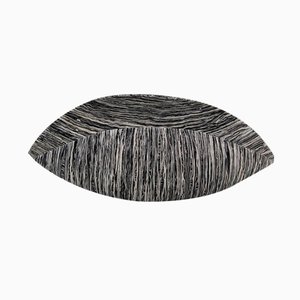
Multiplastica Domestica Large Tiered Fruit Bowl in Pink by Brunno Jahara

Kalahari Wardrobe Medium by Claesson Koivisto Rune

Radiator Chair by Boris Dennler
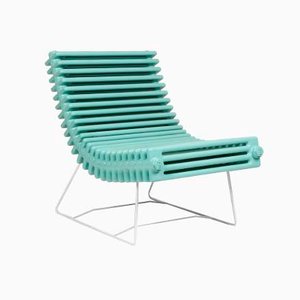
Duo Shelf by Ilaria Bianchi for Marjoram Srl
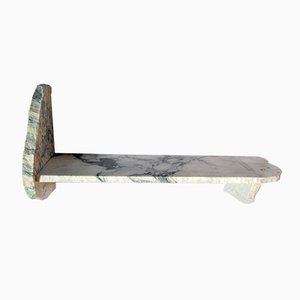
Roll Lamp (Large) by Sébastien Cordoleani
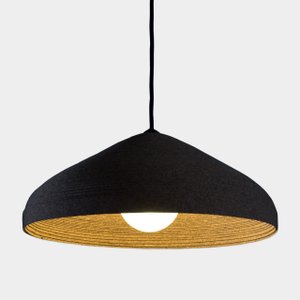
Stellar Orange & Blue Table Lamp by Iain Howlett & Marina Dragomirova

Multiplastica Domestica Medium Tiered Fruit Bowl in Blue by Brunno Jahara
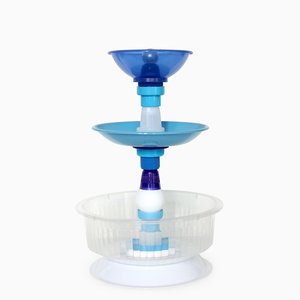
Maun Windsor Lounge Chair by Patty Johnson for Mabeo
